| | | | | | | Presented By SoftBank Group | | | | Axios What's Next | | By Jennifer A. Kingson and Joann Muller ·Mar 29, 2022 | | "While I was writing, I reminded myself that people like reading about food and drink," author Robert Graves wrote in an essay after the publication of his powerful World War I autobiography "Good-bye to All That" (which had many voluptuous food moments). - Today's newsletter is mindful of Graves' good advice.
⚡️Countdown: 7 days until Axios' inaugural What's Next Summit on April 5! Register here to attend virtual livestream sessions. Today's Smart Brevity count: 1,171 words ... 4.5 minutes. | | | | | | 1 big thing: Pop-up digital ads are taking over the freezer aisle | 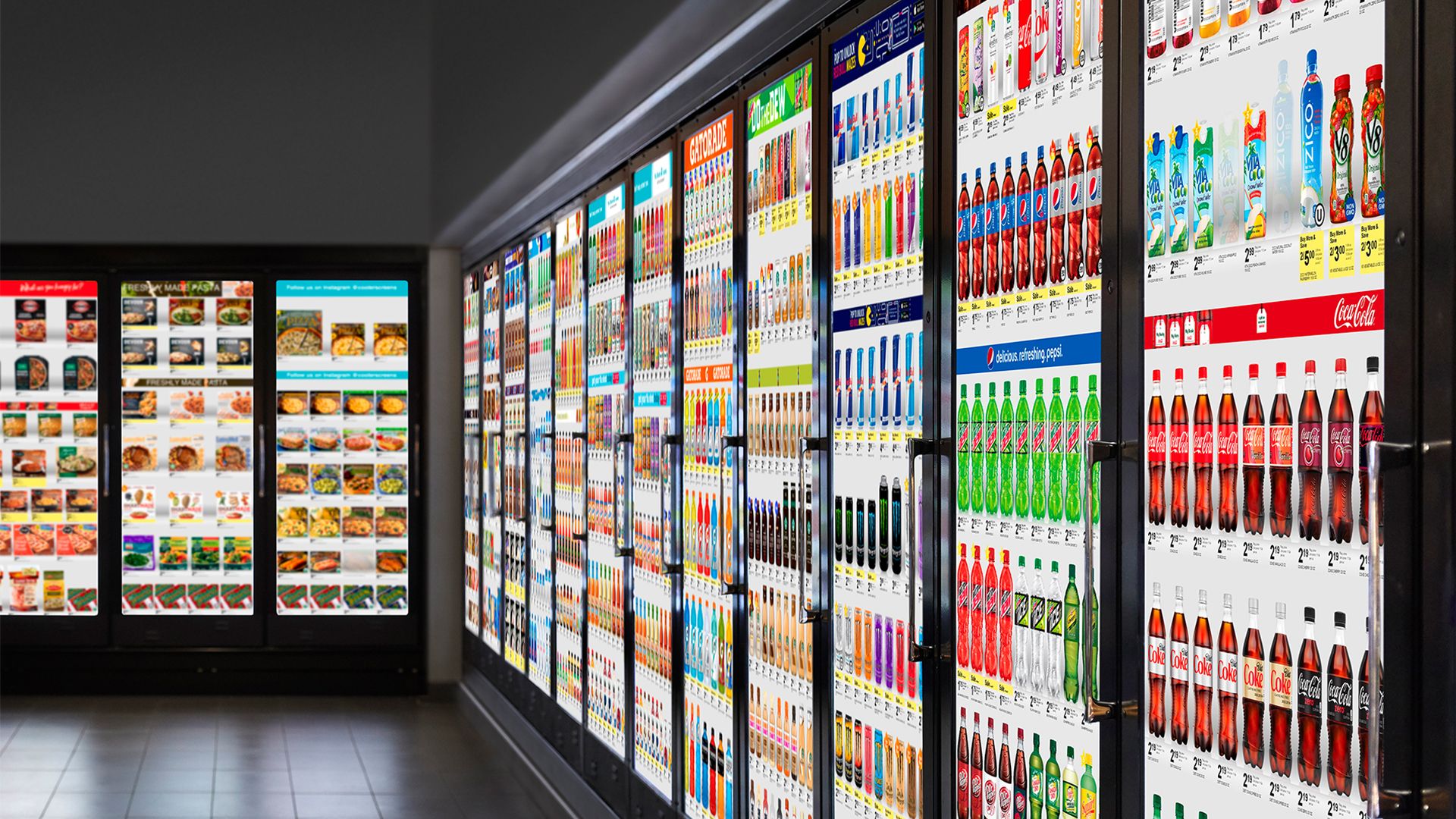 | | | A store's cooler section is turned into a series of digital smart screens. Photo courtesy of Cooler Screens | | | | Grabbing a cold beverage at your local retailer is turning into a high-tech digital odyssey, with ordinary cooler doors coming alive to offer up product information, deals and — yes — advertisements, Joann Muller writes. Why it matters: The imposing digital screens, which play full-motion video, aim to meld the experience of online shopping with brick-and-mortar stores. But they also transfer one of the biggest annoyances of the internet — pop-up ads — to the physical world. And not everyone loves that, as CNN reported. What's happening: The dynamic displays are the brainchild of a Chicago startup called Cooler Screens, which has put them in more than 700 stores in 31 cities, including some Walgreens, Kroger and CVS locations. - From a distance, they look like big electronic billboards with sprawling ads featuring a sparkling Coke, for example, or a mouthwatering scoop of chocolate ice cream.
- When you approach, those advertising images turn into digital representations of the products inside the cases, including what's out of stock.
- Sale items get promoted with special graphics to draw shoppers' attention, as do nutritional details about select products.
They're not the only game in town: Real Digital Media's Primasee Freezer Cooler is a "translucent digital display showcasing high-definition, full-motion video embedded within a freezer or cooler door's glass panel," the company says. - The company boasts that it "increases shopper engagement" and "supports touch capabilities for interactive promotions and product messaging."
How it works: Cooler Screens' high-tech coolers are outfitted with laser sensors that can detect the presence of a customer within 8 feet, triggering the switch in the display screens. - There are no cameras on the outside of the coolers, so no images are captured that can identify individuals.
- Inside the coolers, cameras are used to track product inventory and positioning, which also helps short-staffed retailers replenish shelves when necessary.
- The technology is designed to help brands capitalize on the critical 3-5 seconds when consumers are deciding what to buy.
- For marketers, the displays provide useful data about how many people interacted with the technology, how long they dwelled in front of the screen, and how often they opened the door.
Read the full story |     | | | | | | 2. The hamburger vending machine has arrived | 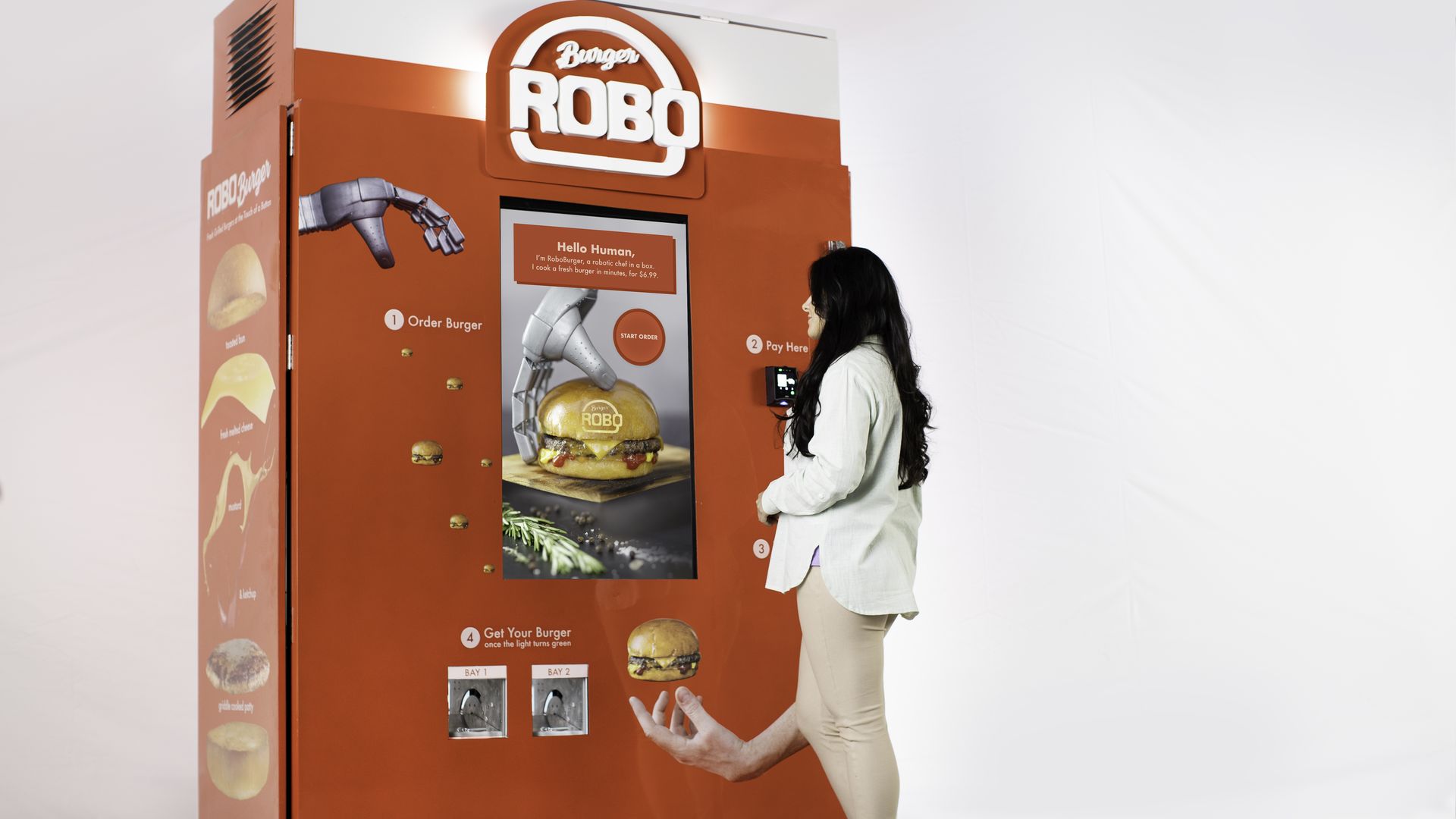 | | | Meet the 6-minute burger grilled by robotic hands in a mall. Photo courtesy of RoboBurger | | | | We found a pizza vending machine. There are plenty of cupcake vending machines out there. Now, it is the hamburger's time, Jennifer A. Kingson writes. Why it matters: As more of our favorite foods are pressed into service as insert-a-coin-and-wait-for-it items, will the shopping mall food court ever be the same? - Goodbye, fast-food labor costs.
Driving the news: A company called RoboBurger sells a machine that will make you a burger with custom toppings — from "grass and vegetarian fed 100% Angus beef, always antibiotic-free, raised with no artificial growth hormones" — in 6 minutes for $6.99. - Not just a vending machine, the RoboBurger is "a whole kitchen shoved into 12 square feet," Dan Braido, co-founder of the company, tells NorthJersey.com, a news site.
- The first one was just installed in the Newport Centre Mall in Jersey City. The company sees the next RoboBurgers going to bars, college campuses, airports, hospitals, rest stops, etc.
- "The touch screen allows you to order a classic burger with ketchup, mustard and cheese, or customize the burger to remove any of those ingredients if you choose," NorthJersey.com says.
How it works: RoboBurger, which calls its contraption a "chef in a box," says that its mechanical culinary artist "goes through five distinct operations while cooking the burger, mimicking the process chefs use in real restaurants." - First, the robot places the patty on a griddle and grills it on both sides.
- It toasts the bun and adds the condiments.
- Then it assembles the burger and delivers it to the diner in a cute cardboard box.
Keep reading |     | | | | | | 3. Women earn more than men in 22 U.S. cities |  Data: Pew Research Center analysis of 2015-19 American Community Survey (IPUMS); Chart: Baidi Wang/Axios Women under 30 out-earned men in 22 cities across the country, including New York and Washington, D.C., writes Axios' Emily Peck, based on a Pew Research analysis of census data through 2019. Why it matters: The gender wage gap is less severe when women are just starting out in their careers. Women age 16-29 earn 93%, on average, of what men make, compared with 84% for all women. - In the other 228 cities Pew analyzed, young women earned less than men.
Between the lines: The cities where women are getting ahead generally have plenty of jobs that require higher levels of education, says Marianne Cooper, a sociologist at Stanford who studies women and leadership. And women have been earning more college degrees than men for decades. The big picture: The edge in pay likely won't last as these women grow older. - Women are promoted at a slower pace, Cooper said. And those who have children typically face a wage penalty. (Fathers typically get a wage bump.)
- "It's unlikely that this finding will hold in the long run," Cooper said.
Yes, but: This data is from 2015-2019, and women's wages have actually been rising faster than men's lately, as a labor shortage pushes up pay. Share this story |     | | | | | | A message from SoftBank Group | | Accelerating human progress through technology | | | 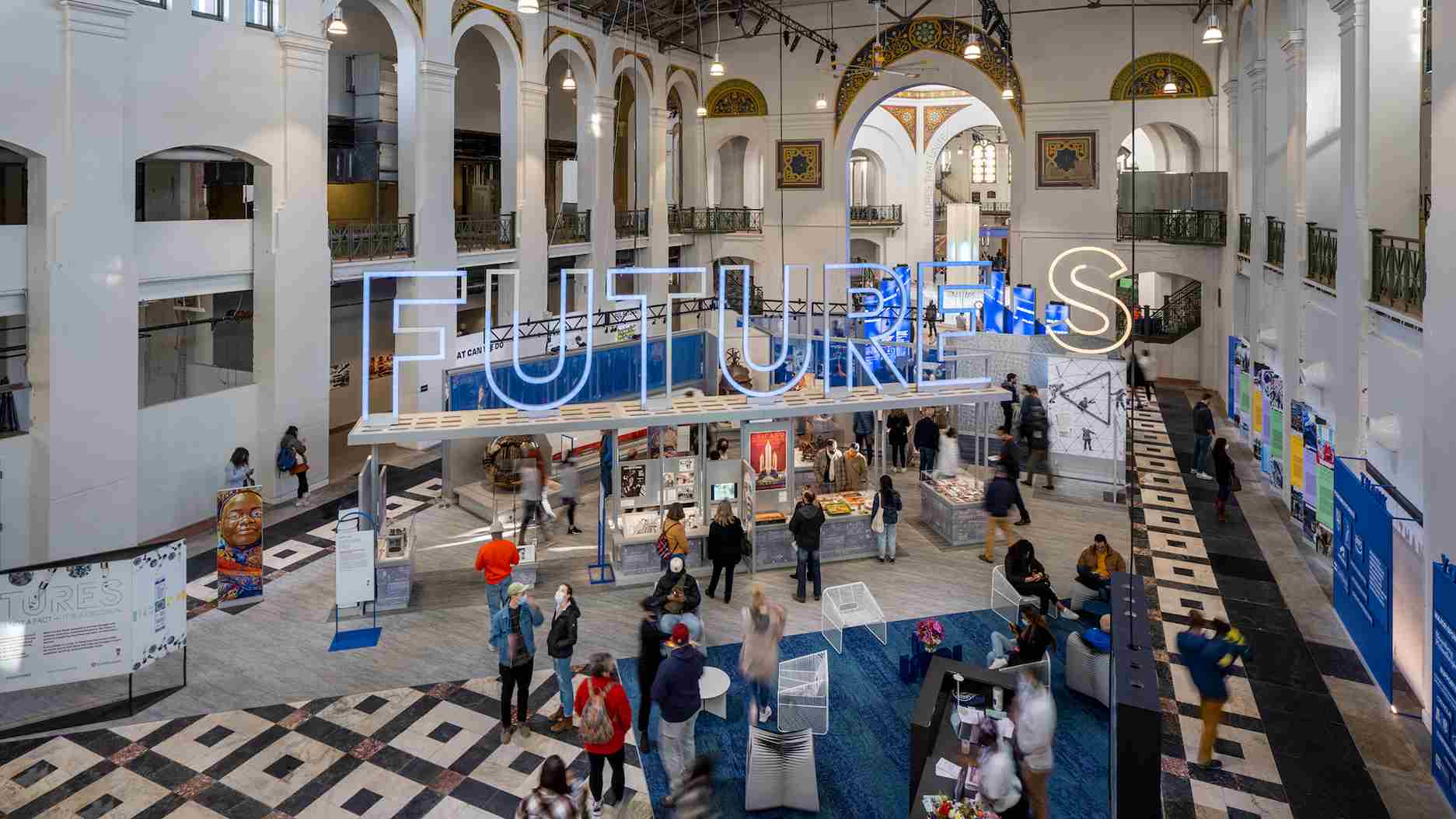 | | | | At SoftBank Group, we invest in companies that accelerate human progress through technology. That's why we're proud to support the Smithsonian's FUTURES exhibit, which challenges us to envision how technology can enable a more empowered, connected world. | | | | | | 4. White House officials open crypto climate inquiry | 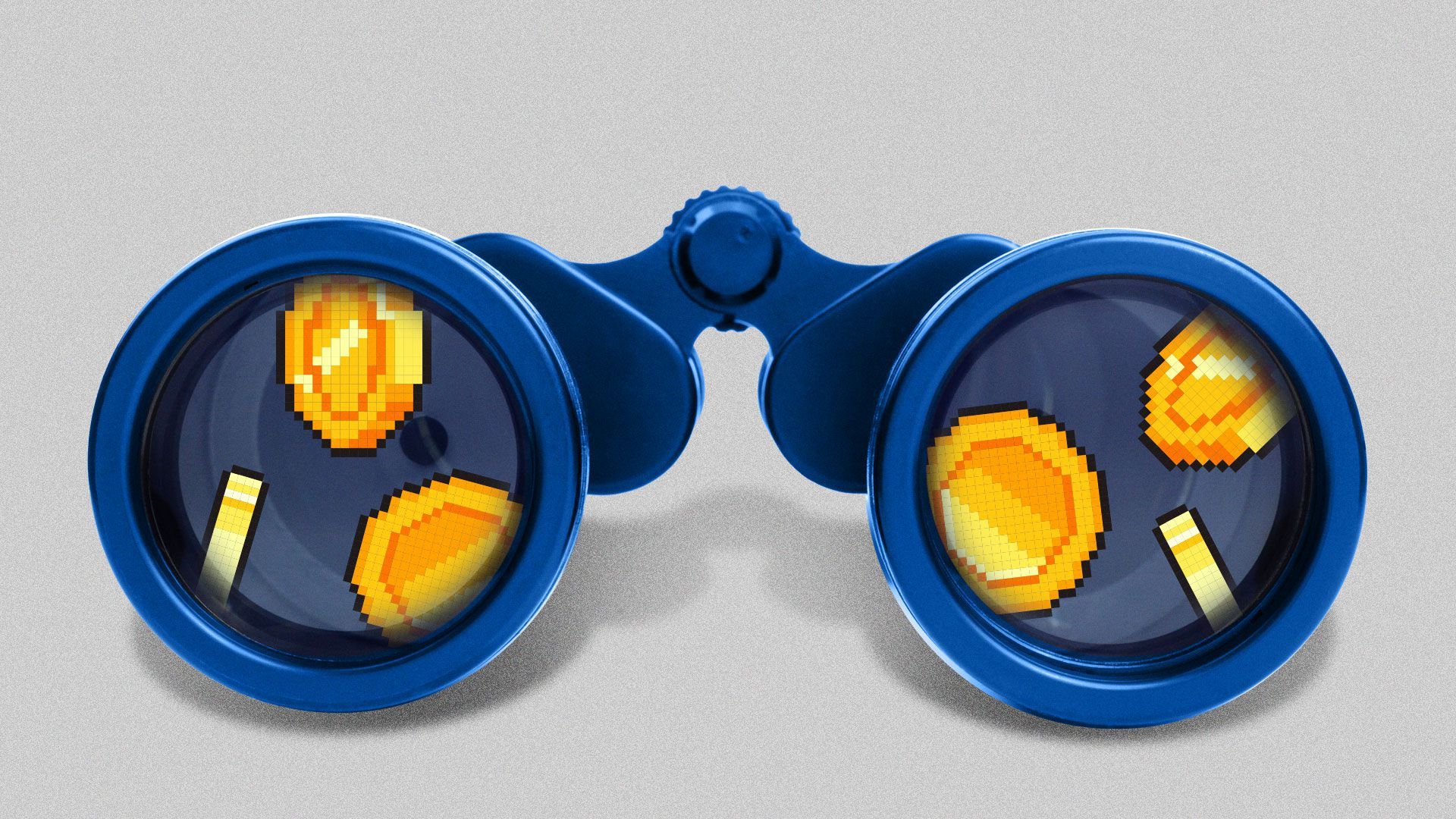 | | | Illustration: Eniola Odetunde/Axios | | | | The White House science office is seeking input about climate harm from expanding use of cryptocurrencies — and ways to tackle the problem, Ben Geman writes in Axios Generate. Why it matters: Digital "mining" to verify and record transactions often involves the use of very powerful, energy-intensive computing equipment. - That's creating concerns about carbon emissions, especially when mining occurs in regions with power grids heavily reliant on fossil fuels.
Driving the news: The Office of Science and Technology Policy (OSTP) on Friday issued a formal "request for information" that solicits feedback by May 9. - OSTP wants info on "protocols, hardware, resources, economics, and other factors that shape the energy use and climate impacts of all types of digital assets."
Threat level: "Some researchers estimate that cryptocurrencies use more electricity each year than many individual countries in the world, including some industrialized nations," it states. Read the full story |     | | | | | | 5. Skinny jeans, dethroned | 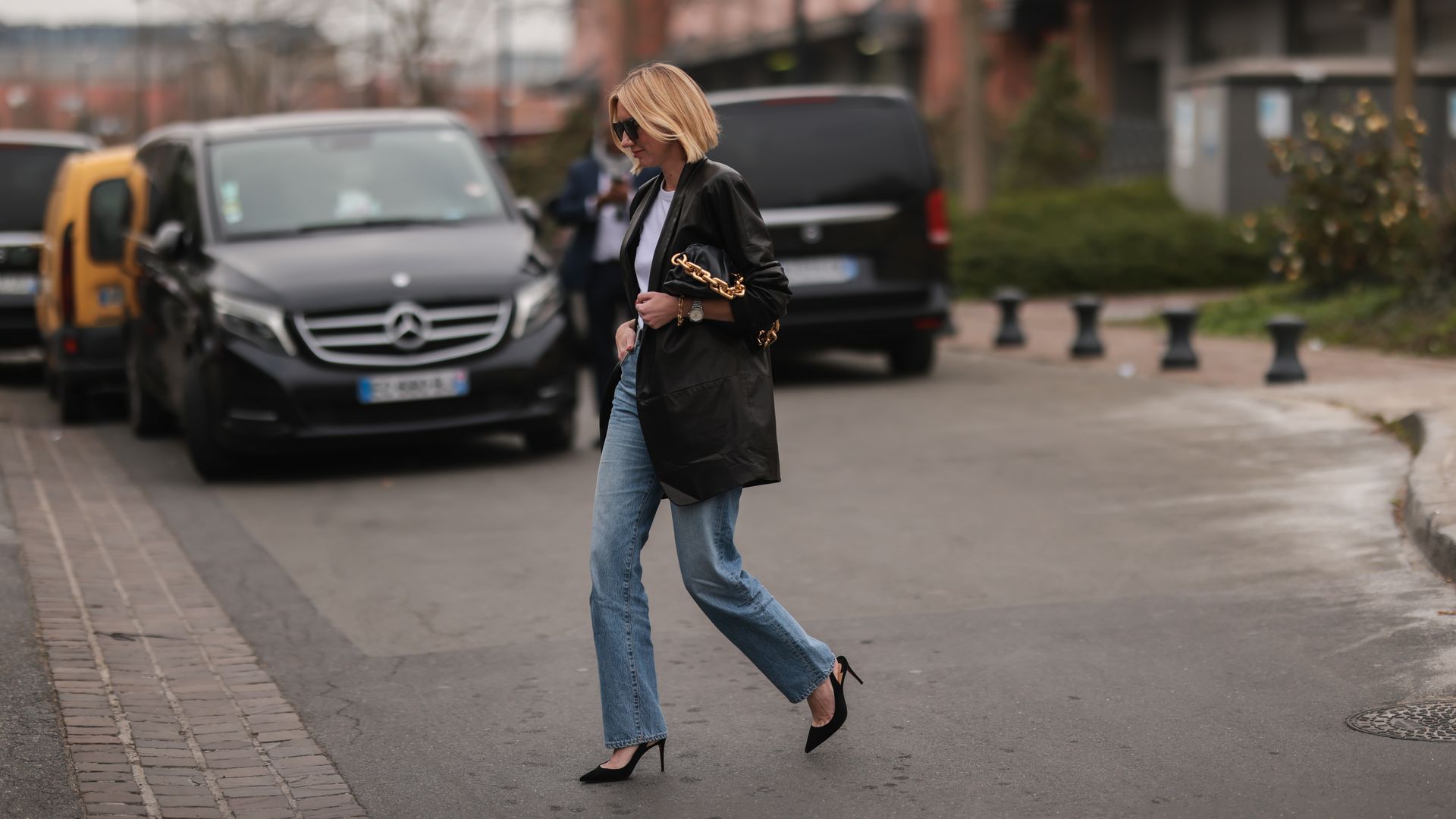 | | | A guest at Paris Fashion Week this month wears straight-leg denim pants. Photo: Jeremy Moeller/Getty Images | | | | Straight-leg jeans became the best-selling fit in 2021, ousting their skinny-legged shelfmates, which had been the best-selling style for years, Jennifer writes, based on an NPD Group report. - Straight fit, flare, boot cut and wider-leg jeans all gained market share in 2021, per NPD, a market research firm.
- A third of all revenue in the women's jeans market in the U.S. in 2021 — $3.3 billion — came from straight-leg jeans.
- "The skinny was the only style to see a drop in sales in 2021 versus pre-pandemic 2019," Quartz noted.
- "The shift is in part due to the fact that a quarter of women are wearing a larger size than before the pandemic, NPD found."
What they're saying: "Comfort apparel trends accelerated by the pandemic shifted jeans trends towards looser fits," Maria Rugolo, an apparel industry analyst at NPD, said in a statement. - "Consumers were looking to branch out beyond the styles that had been sitting in their closets for over a year."
Where it stands: Somewhat surprisingly, Baby Boomers actually increased their purchases of skinny jeans last year, accounting for 12% of the tight-legged pants sold in the U.S. vs. 9% in 2019. |     | | | | | | A message from SoftBank Group | | Creating a more empowered, connected future | | |  | | | | SoftBank Group — a global investor in AI and transformative technology — is proud to support the Smithsonian's FUTURES exhibit, at the Arts + Industries Building through July 6. Come experience this interactive, cutting-edge technology journey, and be part of creating a better future. | | | | Was this email forwarded to you? Get your daily dose of What's Next magic by signing up for our free newsletter here. |  | It's called Smart Brevity®. Over 200 orgs use it — in a tool called Axios HQ — to drive productivity with clearer workplace communications. | | | | | | Axios thanks our partners for supporting our newsletters. If you're interested in advertising, learn more here.
Sponsorship has no influence on editorial content. Axios, 3100 Clarendon Blvd, Suite 1300, Arlington VA 22201 | | | You received this email because you signed up for newsletters from Axios.
Change your preferences or unsubscribe here. | | | Was this email forwarded to you?
Sign up now to get Axios in your inbox. | | | | Follow Axios on social media:    | | | | | |










No comments:
Post a Comment